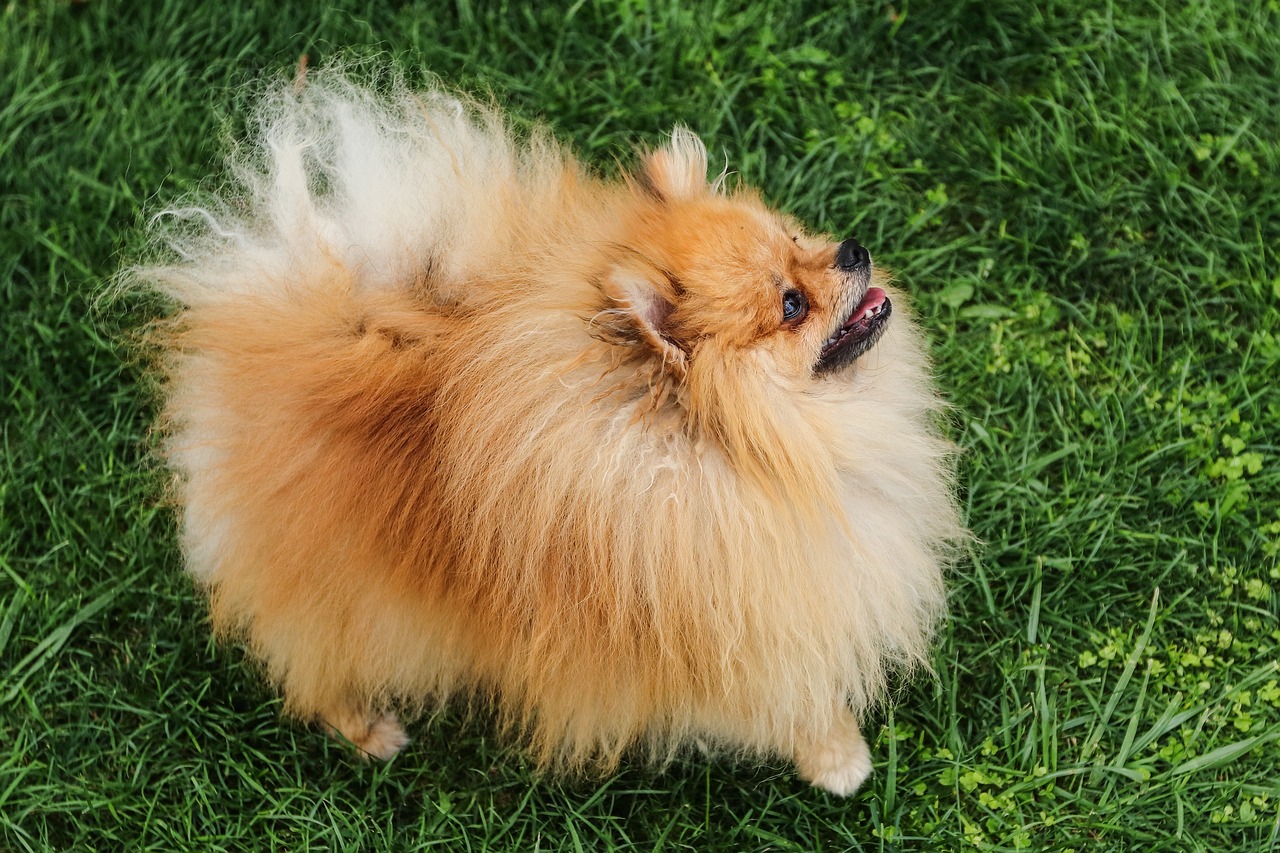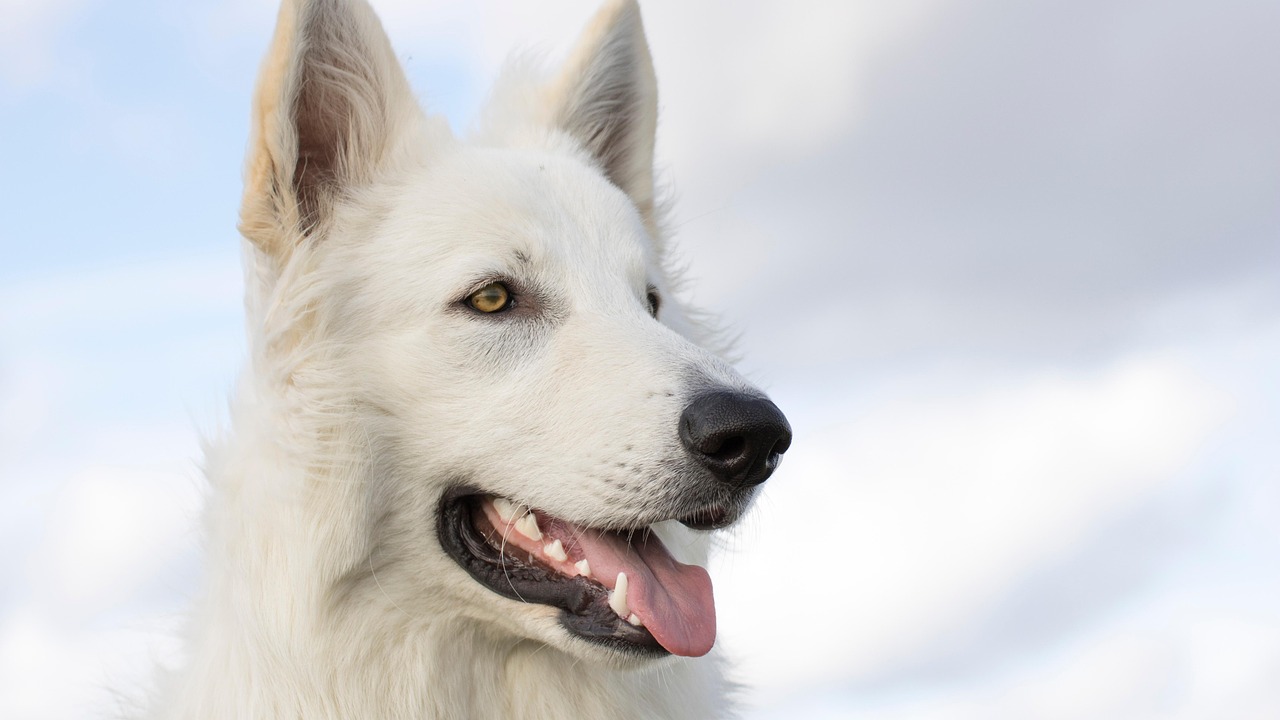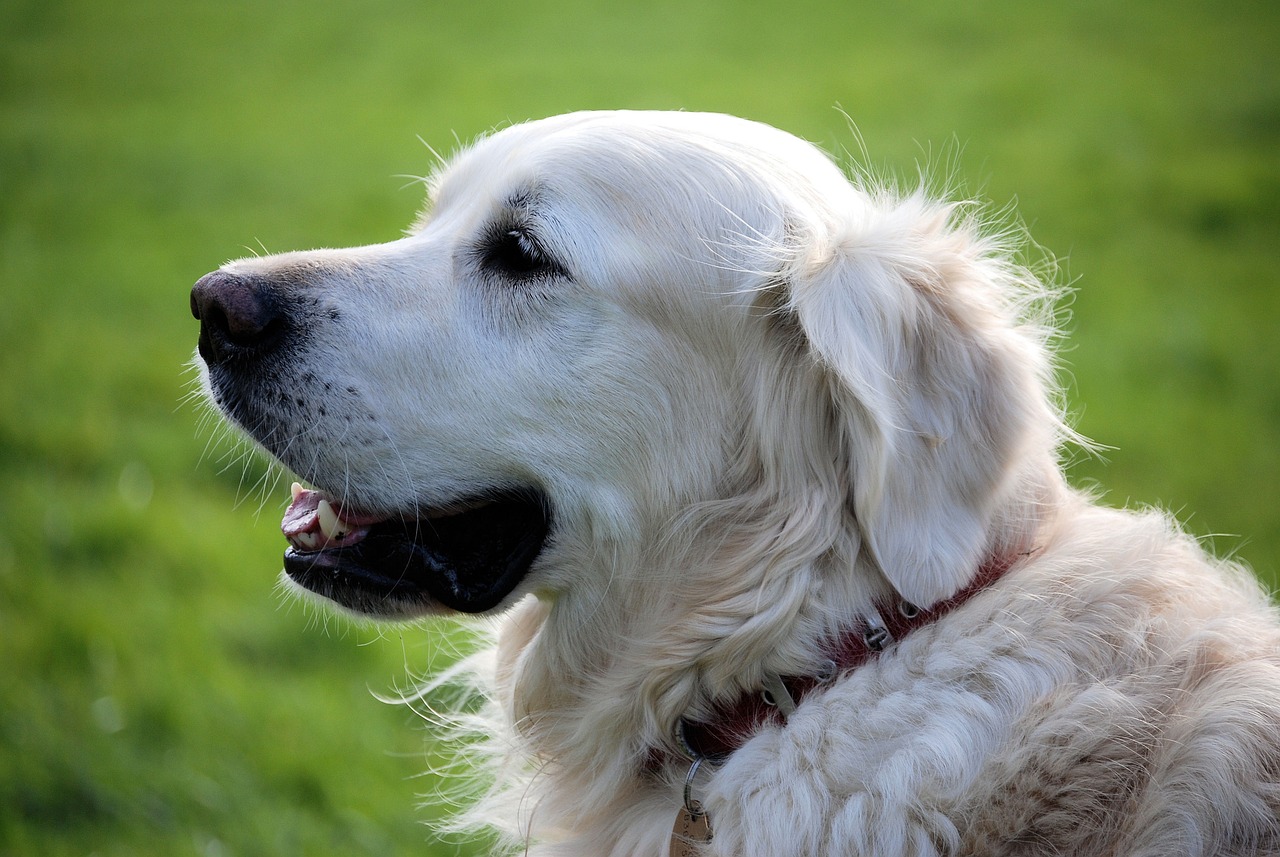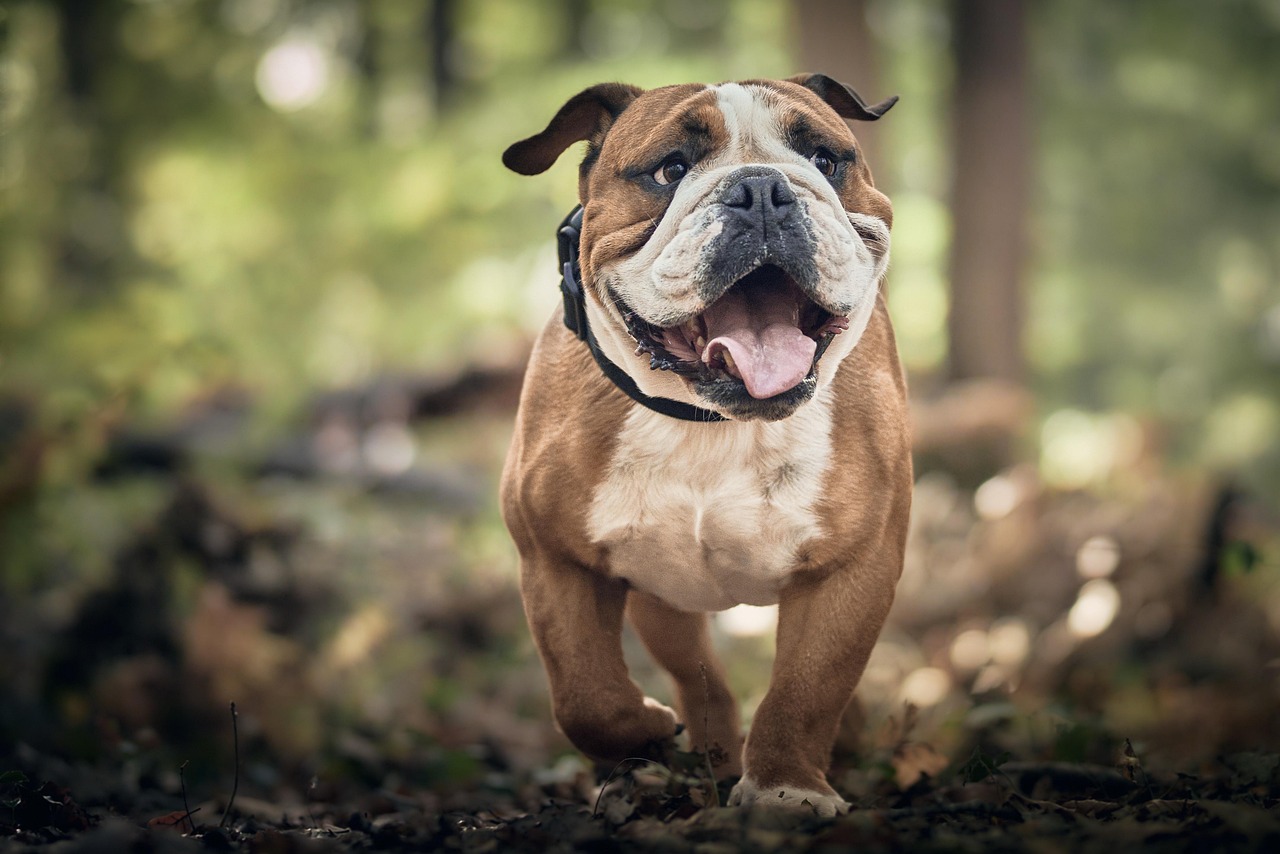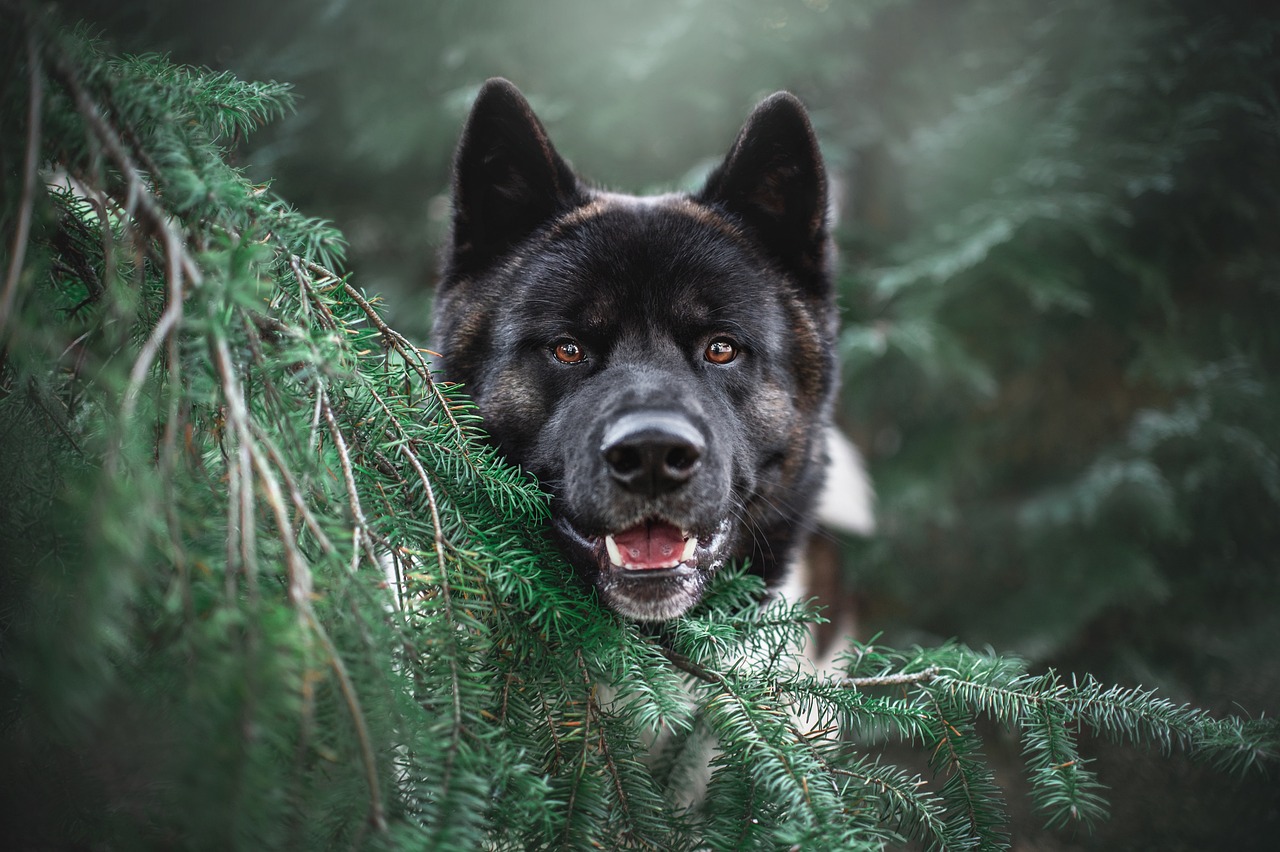Dog Breed Bite Force – Comparing the Most Powerful Jaws
This article explores the bite force of various dog breeds, examining how their jaw strength impacts behavior, training, and safety. We will analyze the most powerful jaws in the canine world.
Understanding Bite Force: What Is It?
Bite force refers to the amount of pressure exerted by a dog’s jaw when biting. It is measured in pounds per square inch (PSI) and varies significantly across breeds.
Why Is Bite Force Important?
Understanding bite force is crucial for dog owners and trainers, as it influences training methods, safety measures, and the overall behavior of different breeds in various environments.
Top Dog Breeds with the Strongest Bite Force
| Breed | Bite Force (PSI) |
|---|---|
| American Pit Bull Terrier | 235 |
| Rottweiler | 328 |
| German Shepherd | 238 |
| Dogo Argentino | 500 |
The Science Behind Measuring Bite Force
Measuring bite force involves specialized equipment and techniques. This section will explain the science behind these measurements and how they are conducted in controlled settings.
Factors Influencing a Dog’s Bite Force
Several factors affect a dog’s bite force, including breed, size, age, and health. This section will delve into how these elements contribute to a dog’s jaw strength.
Comparing Bite Forces Across Breeds
This section will provide a comparative analysis of bite forces among various dog breeds, showcasing the differences in jaw strength and what they mean for owners and trainers.
The Role of Genetics in Bite Strength
Genetics plays a significant role in determining a dog’s bite force. This section will explore how inherited traits influence jaw structure and strength across different breeds.
Training and Managing Powerful Bites
Training is essential for managing dogs with strong bite forces. This section will discuss effective training techniques and strategies to ensure safe and responsible ownership.
Bite Force and Dog Behavior
A dog’s bite force can be indicative of its behavior. This section will examine how bite strength correlates with aggression, playfulness, and other behavioral traits in different breeds.
Common Misconceptions About Dog Bite Force
There are many myths surrounding dog bite force. This section will address common misconceptions and provide factual information to clarify these misunderstandings.
Safety Tips for Dog Owners
For owners of breeds with high bite force, safety is paramount. This section will offer practical tips for ensuring safety at home and in public spaces.
Conclusion: The Importance of Understanding Bite Force
In conclusion, understanding bite force is essential for responsible dog ownership. By recognizing the implications of a dog’s jaw strength, owners can foster safer, more enjoyable relationships with their pets.
This article explores the bite force of various dog breeds, examining how their jaw strength impacts behavior, training, and safety. We will analyze the most powerful jaws in the canine world.
Dog Breed Bite Force – Comparing the Most Powerful Jaws
Understanding Bite Force: What Is It?
Bite force refers to the amount of pressure exerted by a dog’s jaw when biting. It is measured in pounds per square inch (PSI) and varies significantly across breeds.
Why Is Bite Force Important?
Understanding bite force is crucial for dog owners and trainers, as it influences training methods, safety measures, and the overall behavior of different breeds in various environments.
Top Dog Breeds with the Strongest Bite Force
- Kangal: 743 PSI
- Rottweiler: 328 PSI
- German Shepherd: 238 PSI
- American Bulldog: 305 PSI
- Pit Bull: 235 PSI
The Science Behind Measuring Bite Force
Measuring bite force involves specialized equipment and techniques. Typically, a bite sleeve is used in controlled settings to accurately gauge the pressure exerted by a dog’s jaw.
Factors Influencing a Dog’s Bite Force
Several factors affect a dog’s bite force, including breed, size, age, and health. Larger breeds generally exhibit stronger bite forces due to their jaw structure and muscle mass.
Comparing Bite Forces Across Breeds
This section provides a comparative analysis of bite forces among various dog breeds, showcasing differences in jaw strength and their implications for owners and trainers.
The Role of Genetics in Bite Strength
Genetics plays a significant role in determining a dog’s bite force. Inherited traits influence jaw structure and strength across different breeds.
Training and Managing Powerful Bites
Training is essential for managing dogs with strong bite forces. Effective training techniques include positive reinforcement and socialization to ensure safe and responsible ownership.
Bite Force and Dog Behavior
A dog’s bite force can be indicative of its behavior. Stronger bite forces may correlate with aggression, while other breeds may display playfulness despite their strength.
Common Misconceptions About Dog Bite Force
Many myths surround dog bite force. For instance, the belief that a strong bite means a dog is inherently aggressive is misleading. Context and training play critical roles.
Safety Tips for Dog Owners
For owners of breeds with high bite force, safety is paramount. Practical tips include:
- Regular training sessions
- Proper socialization with other dogs
- Using muzzles in public spaces if necessary
Conclusion: The Importance of Understanding Bite Force
In conclusion, understanding bite force is essential for responsible dog ownership. By recognizing the implications of a dog’s jaw strength, owners can foster safer, more enjoyable relationships with their pets.
## [Understanding Bite Force: What Is It?]
Dog Breed Bite Force – Comparing the Most Powerful Jaws
This article explores the bite force of various dog breeds, examining how their jaw strength impacts behavior, training, and safety. We will analyze the most powerful jaws in the canine world.
Understanding Bite Force: What Is It?
Bite force refers to the amount of pressure exerted by a dog’s jaw when biting. It is measured in pounds per square inch (PSI) and varies significantly across breeds. For instance, the Rottweiler has a bite force of approximately 328 PSI, making it one of the strongest among dog breeds.
Why Is Bite Force Important?
Understanding bite force is crucial for dog owners and trainers, as it influences training methods, safety measures, and the overall behavior of different breeds in various environments. A strong bite force can indicate a need for more careful training and socialization.
Top Dog Breeds with the Strongest Bite Force
- Rottweiler: 328 PSI
- American Bulldog: 305 PSI
- German Shepherd: 238 PSI
- Dogo Argentino: 500 PSI
- Pit Bull: 235 PSI
The Science Behind Measuring Bite Force
Measuring bite force involves specialized equipment and techniques. This process usually occurs in controlled settings where a dog bites down on a device that measures the pressure exerted.
Factors Influencing a Dog’s Bite Force
Several factors affect a dog’s bite force, including breed, size, age, and health. For example, larger dogs typically exhibit stronger bite forces due to their size and jaw structure.
Comparing Bite Forces Across Breeds
| Breed | Bite Force (PSI) |
|---|---|
| Rottweiler | 328 |
| American Bulldog | 305 |
| German Shepherd | 238 |
| Dogo Argentino | 500 |
| Pit Bull | 235 |
The Role of Genetics in Bite Strength
Genetics plays a significant role in determining a dog’s bite force. Inherited traits influence jaw structure and strength across different breeds.
Training and Managing Powerful Bites
Training is essential for managing dogs with strong bite forces. Effective training techniques and strategies can ensure safe and responsible ownership.
Bite Force and Dog Behavior
A dog’s bite force can be indicative of its behavior. Stronger bite forces may correlate with certain behavioral traits, such as aggression or protectiveness.
Common Misconceptions About Dog Bite Force
There are many myths surrounding dog bite force. Addressing these misconceptions is vital for promoting understanding and responsible ownership.
Safety Tips for Dog Owners
For owners of breeds with high bite force, safety is paramount. Practical tips include proper training, socialization, and understanding breed-specific behaviors.
Conclusion: The Importance of Understanding Bite Force
In conclusion, understanding bite force is essential for responsible dog ownership. By recognizing the implications of a dog’s jaw strength, owners can foster safer, more enjoyable relationships with their pets.
Bite force refers to the amount of pressure exerted by a dog’s jaw when biting. It is measured in pounds per square inch (PSI) and varies significantly across breeds.
Dog Breed Bite Force – Comparing the Most Powerful Jaws
This article explores the bite force of various dog breeds, examining how their jaw strength impacts behavior, training, and safety. We will analyze the most powerful jaws in the canine world.
Understanding Bite Force: What Is It?
Why Is Bite Force Important?
Understanding bite force is crucial for dog owners and trainers, as it influences training methods, safety measures, and the overall behavior of different breeds in various environments.
Top Dog Breeds with the Strongest Bite Force
| Breed | Bite Force (PSI) |
|---|---|
| Rottweiler | 328 |
| American Bulldog | 305 |
| German Shepherd | 238 |
| Dogo Argentino | 500 |
The Science Behind Measuring Bite Force
Measuring bite force involves specialized equipment and techniques. This section will explain the science behind these measurements and how they are conducted in controlled settings.
Factors Influencing a Dog’s Bite Force
Several factors affect a dog’s bite force, including breed, size, age, and health. This section will delve into how these elements contribute to a dog’s jaw strength.
Comparing Bite Forces Across Breeds
This section will provide a comparative analysis of bite forces among various dog breeds, showcasing the differences in jaw strength and what they mean for owners and trainers.
The Role of Genetics in Bite Strength
Genetics plays a significant role in determining a dog’s bite force. This section will explore how inherited traits influence jaw structure and strength across different breeds.
Training and Managing Powerful Bites
Training is essential for managing dogs with strong bite forces. This section will discuss effective training techniques and strategies to ensure safe and responsible ownership.
Bite Force and Dog Behavior
A dog’s bite force can be indicative of its behavior. This section will examine how bite strength correlates with aggression, playfulness, and other behavioral traits in different breeds.
Common Misconceptions About Dog Bite Force
There are many myths surrounding dog bite force. This section will address common misconceptions and provide factual information to clarify these misunderstandings.
Safety Tips for Dog Owners
For owners of breeds with high bite force, safety is paramount. This section will offer practical tips for ensuring safety at home and in public spaces.
Conclusion: The Importance of Understanding Bite Force
In conclusion, understanding bite force is essential for responsible dog ownership. By recognizing the implications of a dog’s jaw strength, owners can foster safer, more enjoyable relationships with their pets.
## [Why Is Bite Force Important?]
Why Is Bite Force Important?
Understanding the bite force of dogs is crucial for several reasons. It impacts not only the training methods employed by owners and trainers but also the safety measures necessary to ensure a harmonious relationship between dogs and humans. By comprehending the significance of bite force, dog owners can make informed decisions regarding their pets’ care and management.
First and foremost, the bite force can help identify a dog’s potential behavior in various situations. For instance, breeds known for their strong jaws, such as the Rottweiler or the American Pit Bull Terrier, may exhibit different behavioral traits compared to those with weaker bite forces. This understanding can guide owners in selecting appropriate training techniques that suit the breed’s inherent characteristics.
Moreover, recognizing the bite force of a dog can enhance safety measures at home and in public. For example, owners of breeds with higher bite forces should implement stricter leash and muzzle policies when in crowded areas or around children. This proactive approach can prevent potential incidents and foster a safer environment for both the dog and the community.
In addition, the bite force is a critical factor in dog sports and competitions. Understanding a breed’s jaw strength can help trainers tailor their training programs to maximize performance while minimizing the risk of injury. This knowledge is invaluable for those involved in canine sports, such as Schutzhund or agility competitions.
Finally, educating the public about the implications of bite force can dispel common misconceptions surrounding certain breeds. By providing factual information, we can foster a more informed society that appreciates the diversity of dog breeds and their unique characteristics.
In conclusion, understanding bite force is essential for responsible dog ownership. It not only influences training and safety but also contributes to a more harmonious relationship between dogs and their human companions.
Understanding bite force is crucial for dog owners and trainers, as it influences training methods, safety measures, and the overall behavior of different breeds in various environments.
Dog Breed Bite Force – Comparing the Most Powerful Jaws
This article explores the bite force of various dog breeds, examining how their jaw strength impacts behavior, training, and safety. We will analyze the most powerful jaws in the canine world.
Understanding Bite Force: What Is It?
Bite force refers to the amount of pressure exerted by a dog’s jaw when biting. It is measured in pounds per square inch (PSI) and varies significantly across breeds.
Why Is Bite Force Important?
Top Dog Breeds with the Strongest Bite Force
- Rottweiler: 328 PSI
- American Bulldog: 305 PSI
- German Shepherd: 238 PSI
- Dogo Argentino: 500 PSI
The Science Behind Measuring Bite Force
Measuring bite force involves specialized equipment and techniques. This section will explain the science behind these measurements and how they are conducted in controlled settings.
Factors Influencing a Dog’s Bite Force
Several factors affect a dog’s bite force, including breed, size, age, and health. This section will delve into how these elements contribute to a dog’s jaw strength.
Comparing Bite Forces Across Breeds
This section will provide a comparative analysis of bite forces among various dog breeds, showcasing the differences in jaw strength and what they mean for owners and trainers.
The Role of Genetics in Bite Strength
Genetics plays a significant role in determining a dog’s bite force. This section will explore how inherited traits influence jaw structure and strength across different breeds.
Training and Managing Powerful Bites
Training is essential for managing dogs with strong bite forces. This section will discuss effective training techniques and strategies to ensure safe and responsible ownership.
Bite Force and Dog Behavior
A dog’s bite force can be indicative of its behavior. This section will examine how bite strength correlates with aggression, playfulness, and other behavioral traits in different breeds.
Common Misconceptions About Dog Bite Force
There are many myths surrounding dog bite force. This section will address common misconceptions and provide factual information to clarify these misunderstandings.
Safety Tips for Dog Owners
For owners of breeds with high bite force, safety is paramount. This section will offer practical tips for ensuring safety at home and in public spaces.
Conclusion: The Importance of Understanding Bite Force
In conclusion, understanding bite force is essential for responsible dog ownership. By recognizing the implications of a dog’s jaw strength, owners can foster safer, more enjoyable relationships with their pets.
## [Top Dog Breeds with the Strongest Bite Force]
Dog Breed Bite Force – Comparing the Most Powerful Jaws
This article explores the bite force of various dog breeds, examining how their jaw strength impacts behavior, training, and safety. We will analyze the most powerful jaws in the canine world.
Top Dog Breeds with the Strongest Bite Force
When it comes to bite force, certain breeds stand out due to their incredible jaw strength. Below is a list of some of the top contenders, along with their bite force measured in pounds per square inch (PSI) and key characteristics.
| Dog Breed | Bite Force (PSI) | Characteristics |
|---|---|---|
| American Pit Bull Terrier | 235 PSI | Strong, loyal, and highly trainable. |
| Rottweiler | 328 PSI | Confident, fearless, and protective. |
| German Shepherd | 238 PSI | Intelligent, versatile, and loyal. |
| Dogo Argentino | 500 PSI | Brave, strong, and highly protective. |
| Kangal | 743 PSI | Gentle, loyal, and an excellent guardian. |
Understanding Bite Force: What Is It?
Bite force refers to the amount of pressure exerted by a dog’s jaw when biting, measured in pounds per square inch (PSI). It varies significantly across breeds and is crucial for dog owners and trainers to understand.
Why Is Bite Force Important?
Understanding bite force is essential as it influences training methods, safety measures, and the overall behavior of different breeds in various environments.
Conclusion: The Importance of Understanding Bite Force
In conclusion, understanding bite force is essential for responsible dog ownership. By recognizing the implications of a dog’s jaw strength, owners can foster safer, more enjoyable relationships with their pets.
Certain breeds possess exceptional bite strength. This section will highlight the top contenders, detailing their PSI measurements and characteristics that contribute to their powerful jaws.
Dog Breed Bite Force – Comparing the Most Powerful Jaws
This article explores the bite force of various dog breeds, examining how their jaw strength impacts behavior, training, and safety. We will analyze the most powerful jaws in the canine world.
Top Dog Breeds with the Strongest Bite Force
Certain breeds possess exceptional bite strength. Below is a detailed comparison of the top contenders, including their PSI measurements and characteristics that contribute to their powerful jaws:
| Dog Breed | Bite Force (PSI) | Characteristics |
|---|---|---|
| American Pit Bull Terrier | 235 PSI | Strong, muscular build; known for loyalty and intelligence. |
| Rottweiler | 328 PSI | Powerful and confident; often used as guard dogs. |
| German Shepherd | 238 PSI | Highly trainable; commonly used in police and military work. |
| Dogo Argentino | 500 PSI | Strong and courageous; originally bred for big-game hunting. |
| Chow Chow | 220 PSI | Independent and aloof; known for their lion-like mane. |
Understanding the Importance of Bite Force
Understanding bite force is crucial for dog owners and trainers, as it influences training methods, safety measures, and the overall behavior of different breeds in various environments. The jaw strength of a dog can indicate its potential for aggression and the need for effective training.
Conclusion
In conclusion, recognizing the bite force of different dog breeds is essential for responsible ownership. By understanding a dog’s jaw strength, owners can foster safer and more enjoyable relationships with their pets.
## [The Science Behind Measuring Bite Force]
The Science Behind Measuring Bite Force
Bite force is a critical aspect of canine biology that reflects the strength of a dog’s jaw. Understanding how bite force is measured can provide significant insights into a dog’s behavior, training needs, and safety considerations. This article delves into the scientific methods used to measure bite force in dogs, ensuring that dog owners and trainers can make informed decisions based on accurate data.
What Is Bite Force?
Bite force is defined as the amount of pressure exerted by a dog’s jaw when it bites. It is typically measured in pounds per square inch (PSI). Different breeds exhibit varying levels of bite force, influenced by factors such as size, breed characteristics, and genetics.
Methods of Measuring Bite Force
To accurately measure a dog’s bite force, researchers utilize specialized equipment, including:
- Bite Force Gauges: These devices are often used in controlled environments to measure the PSI exerted during a bite.
- Pressure Sensors: These sensors can be placed in a dog’s mouth to provide real-time data on bite strength.
- Force Plates: These are used to measure the overall force exerted by a dog when it bites down on an object.
Factors Affecting Measurement Accuracy
Several factors can influence the accuracy of bite force measurements, including:
- Dog’s Motivation: A dog’s willingness to bite can vary based on motivation, such as play or aggression.
- Equipment Calibration: Proper calibration of measuring devices is essential for obtaining accurate results.
- Environmental Conditions: Stressful environments can affect a dog’s performance and, consequently, the measurement.
Conclusion
Understanding the science behind measuring bite force is essential for dog owners and trainers. By recognizing the methods and factors involved, one can better appreciate the implications of a dog’s bite strength on behavior and training. Accurate bite force measurements can lead to safer interactions between dogs and humans, fostering a better understanding of canine behavior.
Measuring bite force involves specialized equipment and techniques. This section will explain the science behind these measurements and how they are conducted in controlled settings.
Dog Breed Bite Force – Comparing the Most Powerful Jaws
This article explores the bite force of various dog breeds, examining how their jaw strength impacts behavior, training, and safety. We will analyze the most powerful jaws in the canine world.
Understanding Bite Force: What Is It?
Bite force refers to the amount of pressure exerted by a dog’s jaw when biting. It is measured in pounds per square inch (PSI) and varies significantly across breeds.
Why Is Bite Force Important?
Understanding bite force is crucial for dog owners and trainers, as it influences training methods, safety measures, and the overall behavior of different breeds in various environments.
Top Dog Breeds with the Strongest Bite Force
- American Pit Bull Terrier: 235 PSI
- Rottweiler: 328 PSI
- German Shepherd: 238 PSI
- American Bulldog: 305 PSI
The Science Behind Measuring Bite Force
Factors Influencing a Dog’s Bite Force
Several factors affect a dog’s bite force, including breed, size, age, and health. This section will delve into how these elements contribute to a dog’s jaw strength.
Comparing Bite Forces Across Breeds
This section will provide a comparative analysis of bite forces among various dog breeds, showcasing the differences in jaw strength and what they mean for owners and trainers.
The Role of Genetics in Bite Strength
Genetics plays a significant role in determining a dog’s bite force. This section will explore how inherited traits influence jaw structure and strength across different breeds.
Training and Managing Powerful Bites
Training is essential for managing dogs with strong bite forces. This section will discuss effective training techniques and strategies to ensure safe and responsible ownership.
Bite Force and Dog Behavior
A dog’s bite force can be indicative of its behavior. This section will examine how bite strength correlates with aggression, playfulness, and other behavioral traits in different breeds.
Common Misconceptions About Dog Bite Force
There are many myths surrounding dog bite force. This section will address common misconceptions and provide factual information to clarify these misunderstandings.
Safety Tips for Dog Owners
For owners of breeds with high bite force, safety is paramount. This section will offer practical tips for ensuring safety at home and in public spaces.
Conclusion: The Importance of Understanding Bite Force
In conclusion, understanding bite force is essential for responsible dog ownership. By recognizing the implications of a dog’s jaw strength, owners can foster safer, more enjoyable relationships with their pets.
## [Factors Influencing a Dog’s Bite Force]
Factors Influencing a Dog’s Bite Force
The bite force of a dog is not solely determined by its breed; rather, it is influenced by a variety of factors that can significantly impact jaw strength. Understanding these factors is crucial for dog owners and trainers alike.
- Breed: Different breeds have varying jaw structures and muscle compositions, which directly affect their bite force. For instance, breeds like the Rottweiler and American Pit Bull Terrier are known for their powerful jaws.
- Size: Generally, larger dogs tend to have stronger bites due to greater muscle mass and jaw size. However, size alone does not determine bite force, as smaller breeds can also exhibit surprising strength.
- Age: A dog’s age plays a role in its bite force. Young dogs may not have fully developed jaw muscles, while older dogs may experience a decline in strength due to health issues.
- Health: Overall health and dental condition can influence a dog’s bite force. Dogs with dental problems or injuries may exhibit a weaker bite.
- Training: Proper training can enhance a dog’s bite strength and control. Dogs that are well-trained are often more adept at using their bite force appropriately.
- Genetics: Inherited traits significantly impact a dog’s physical capabilities, including bite strength. Genetic predispositions can lead to variations in jaw structure and muscle development.
In conclusion, understanding the various factors that influence a dog’s bite force is essential for responsible ownership and training. By considering breed, size, age, health, training, and genetics, owners can better manage their dog’s behavior and ensure safety in different environments.
Several factors affect a dog’s bite force, including breed, size, age, and health. This section will delve into how these elements contribute to a dog’s jaw strength.
Dog Breed Bite Force – Comparing the Most Powerful Jaws
This article explores the bite force of various dog breeds, examining how their jaw strength impacts behavior, training, and safety. We will analyze the most powerful jaws in the canine world.
Understanding Bite Force: What Is It?
Bite force refers to the amount of pressure exerted by a dog’s jaw when biting. It is measured in pounds per square inch (PSI) and varies significantly across breeds.
Why Is Bite Force Important?
Understanding bite force is crucial for dog owners and trainers, as it influences training methods, safety measures, and the overall behavior of different breeds in various environments.
Top Dog Breeds with the Strongest Bite Force
Certain breeds possess exceptional bite strength. This section will highlight the top contenders, detailing their PSI measurements and characteristics that contribute to their powerful jaws.
The Science Behind Measuring Bite Force
Measuring bite force involves specialized equipment and techniques. This section will explain the science behind these measurements and how they are conducted in controlled settings.
Factors Influencing a Dog’s Bite Force
- Breed: Different breeds are genetically predisposed to varying levels of jaw strength.
- Size: Larger dogs typically have stronger jaws due to their size and muscle mass.
- Age: Younger dogs may not have fully developed jaw strength, while older dogs may experience a decline.
- Health: Dental issues or other health problems can impact a dog’s bite force.
Comparing Bite Forces Across Breeds
This section will provide a comparative analysis of bite forces among various dog breeds, showcasing the differences in jaw strength and what they mean for owners and trainers.
The Role of Genetics in Bite Strength
Genetics plays a significant role in determining a dog’s bite force. This section will explore how inherited traits influence jaw structure and strength across different breeds.
Training and Managing Powerful Bites
Training is essential for managing dogs with strong bite forces. This section will discuss effective training techniques and strategies to ensure safe and responsible ownership.
Bite Force and Dog Behavior
A dog’s bite force can be indicative of its behavior. This section will examine how bite strength correlates with aggression, playfulness, and other behavioral traits in different breeds.
Common Misconceptions About Dog Bite Force
There are many myths surrounding dog bite force. This section will address common misconceptions and provide factual information to clarify these misunderstandings.
Safety Tips for Dog Owners
For owners of breeds with high bite force, safety is paramount. This section will offer practical tips for ensuring safety at home and in public spaces.
Conclusion: The Importance of Understanding Bite Force
In conclusion, understanding bite force is essential for responsible dog ownership. By recognizing the implications of a dog’s jaw strength, owners can foster safer, more enjoyable relationships with their pets.
## [Comparing Bite Forces Across Breeds]
Dog Breed Bite Force – Comparing the Most Powerful Jaws
This article explores the bite force of various dog breeds, examining how their jaw strength impacts behavior, training, and safety. We will analyze the most powerful jaws in the canine world.
Understanding Bite Force: What Is It?
Bite force refers to the amount of pressure exerted by a dog’s jaw when biting. It is measured in pounds per square inch (PSI) and varies significantly across breeds.
Why Is Bite Force Important?
Understanding bite force is crucial for dog owners and trainers, as it influences training methods, safety measures, and the overall behavior of different breeds in various environments.
Top Dog Breeds with the Strongest Bite Force
| Breed | Bite Force (PSI) |
|---|---|
| Rottweiler | 328 |
| American Bulldog | 305 |
| German Shepherd | 238 |
| Dogo Argentino | 500 |
The Science Behind Measuring Bite Force
Measuring bite force involves specialized equipment and techniques. This section will explain the science behind these measurements and how they are conducted in controlled settings.
Factors Influencing a Dog’s Bite Force
- Breed
- Size
- Age
- Health
Comparing Bite Forces Across Breeds
This section will provide a comparative analysis of bite forces among various dog breeds, showcasing the differences in jaw strength and what they mean for owners and trainers.
The Role of Genetics in Bite Strength
Genetics plays a significant role in determining a dog’s bite force. This section will explore how inherited traits influence jaw structure and strength across different breeds.
Training and Managing Powerful Bites
Training is essential for managing dogs with strong bite forces. This section will discuss effective training techniques and strategies to ensure safe and responsible ownership.
Bite Force and Dog Behavior
A dog’s bite force can be indicative of its behavior. This section will examine how bite strength correlates with aggression, playfulness, and other behavioral traits in different breeds.
Common Misconceptions About Dog Bite Force
There are many myths surrounding dog bite force. This section will address common misconceptions and provide factual information to clarify these misunderstandings.
Safety Tips for Dog Owners
For owners of breeds with high bite force, safety is paramount. This section will offer practical tips for ensuring safety at home and in public spaces.
Conclusion: The Importance of Understanding Bite Force
In conclusion, understanding bite force is essential for responsible dog ownership. By recognizing the implications of a dog’s jaw strength, owners can foster safer, more enjoyable relationships with their pets.
This section will provide a comparative analysis of bite forces among various dog breeds, showcasing the differences in jaw strength and what they mean for owners and trainers.
Dog Breed Bite Force – Comparing the Most Powerful Jaws
This article explores the bite force of various dog breeds, examining how their jaw strength impacts behavior, training, and safety. We will analyze the most powerful jaws in the canine world.
Understanding Bite Force: What Is It?
Bite force refers to the amount of pressure exerted by a dog’s jaw when biting. It is measured in pounds per square inch (PSI) and varies significantly across breeds.
Why Is Bite Force Important?
Understanding bite force is crucial for dog owners and trainers, as it influences training methods, safety measures, and the overall behavior of different breeds in various environments.
Top Dog Breeds with the Strongest Bite Force
| Breed | Bite Force (PSI) | Characteristics |
|---|---|---|
| Rottweiler | 328 | Strong, confident, and loyal. |
| American Pit Bull Terrier | 235 | Intelligent, friendly, and courageous. |
| German Shepherd | 238 | Versatile, obedient, and protective. |
The Science Behind Measuring Bite Force
Measuring bite force involves specialized equipment and techniques. This section will explain the science behind these measurements and how they are conducted in controlled settings.
Factors Influencing a Dog’s Bite Force
Several factors affect a dog’s bite force, including breed, size, age, and health. This section will delve into how these elements contribute to a dog’s jaw strength.
Comparing Bite Forces Across Breeds
The Role of Genetics in Bite Strength
Genetics plays a significant role in determining a dog’s bite force. This section will explore how inherited traits influence jaw structure and strength across different breeds.
Training and Managing Powerful Bites
Training is essential for managing dogs with strong bite forces. This section will discuss effective training techniques and strategies to ensure safe and responsible ownership.
Bite Force and Dog Behavior
A dog’s bite force can be indicative of its behavior. This section will examine how bite strength correlates with aggression, playfulness, and other behavioral traits in different breeds.
Common Misconceptions About Dog Bite Force
There are many myths surrounding dog bite force. This section will address common misconceptions and provide factual information to clarify these misunderstandings.
Safety Tips for Dog Owners
For owners of breeds with high bite force, safety is paramount. This section will offer practical tips for ensuring safety at home and in public spaces.
Conclusion: The Importance of Understanding Bite Force
In conclusion, understanding bite force is essential for responsible dog ownership. By recognizing the implications of a dog’s jaw strength, owners can foster safer, more enjoyable relationships with their pets.
## [The Role of Genetics in Bite Strength]
The Role of Genetics in Bite Strength
Understanding the genetic factors that influence a dog’s bite strength is crucial for both breeders and owners. Genetics plays a significant role in determining a dog’s physical traits, including the structure and strength of its jaw. This article delves into how inherited traits affect bite force across different breeds.
Genetic Inheritance and Bite Force
Dog breeds have been selectively bred for various purposes, which has led to the development of distinct physical characteristics. For instance, breeds like the Rottweiler and American Pit Bull Terrier have been bred for strength and protection, resulting in a powerful bite force. In contrast, smaller breeds may have less jaw strength due to their size and breeding history.
Research Findings
Studies have shown that the bite force of a dog is not solely determined by its size but also by its genetic background. For example, a study published in the Journal of Animal Science found that certain breeds, regardless of size, exhibited significantly higher bite forces due to their genetic makeup. This suggests that selective breeding for specific traits can enhance jaw strength.
Jaw Structure and Bite Strength
The anatomy of a dog’s jaw, including the shape and size of the skull and the muscles involved in biting, is influenced by genetics. Breeds with a more robust jaw structure tend to have a higher bite force. For instance, breeds like the German Shepherd possess a strong jaw and well-developed muscles, contributing to their impressive bite strength.
Conclusion
In summary, genetics plays a pivotal role in determining a dog’s bite strength. Understanding these genetic factors can help breeders make informed decisions and assist owners in managing their pets responsibly. By recognizing the influence of genetics on bite force, we can better appreciate the diverse characteristics that different breeds exhibit.
Genetics plays a significant role in determining a dog’s bite force. This section will explore how inherited traits influence jaw structure and strength across different breeds.
Genetics and Its Impact on Dog Bite Force
Understanding the genetic factors that influence a dog’s bite force is essential for dog owners, breeders, and trainers. Genetics plays a significant role in determining a dog’s jaw structure and strength, impacting not only their bite force but also their overall behavior and temperament.
Inherited Traits and Jaw Structure
The jaw structure of a dog is influenced by its genetic makeup. Certain breeds have been selectively bred for specific traits, including bite strength. For example, breeds like the Rottweiler and American Bulldog have strong jaw muscles and a robust skull structure, which contribute to their high bite force. In contrast, smaller breeds like the Chihuahua have a much weaker bite force due to their smaller jaw size and muscle development.
Comparative Analysis of Breeds
| Breed | Bite Force (PSI) | Characteristics |
|---|---|---|
| Rottweiler | 328 | Strong, muscular, protective |
| American Bulldog | 305 | Powerful, loyal, energetic |
| German Shepherd | 238 | Intelligent, versatile, trainable |
| Chihuahua | 100 | Small, alert, feisty |
The Role of Breeding Practices
Selective breeding practices have also contributed to the development of breeds with stronger bite forces. Breeders often prioritize traits such as strength, aggression, and protective instincts, which can lead to an increase in bite force. However, it is essential to balance these traits with temperament and trainability to ensure that the dog is suitable for family life and social interactions.
Conclusion
In conclusion, genetics plays a crucial role in determining a dog’s bite force. Understanding the inherited traits that influence jaw structure and strength can help owners and trainers manage their dogs more effectively. By recognizing these genetic factors, we can foster safer interactions between dogs and their human companions.
## [Training and Managing Powerful Bites]
Training and Managing Powerful Bites
Understanding how to train and manage dogs with powerful bites is essential for ensuring safety and fostering a positive relationship between the dog and its owner. Powerful bite forces can be found in certain breeds, making it crucial for owners to implement effective training strategies.
Why Training is Important
Training not only helps in controlling a dog’s bite but also enhances behavior and socialization. A well-trained dog is less likely to exhibit aggressive tendencies, making it safer for both the owner and the community.
Effective Training Techniques
- Positive Reinforcement: Rewarding desired behaviors with treats or praise encourages dogs to repeat those actions.
- Desensitization: Gradually exposing dogs to various stimuli can reduce anxiety and aggressive responses.
- Obedience Training: Teaching basic commands like “sit,” “stay,” and “leave it” is vital for maintaining control.
- Socialization: Introducing dogs to different environments, people, and other animals helps them become well-adjusted.
Managing Powerful Bites in Daily Life
In addition to training, managing a dog’s environment is crucial. Here are some practical tips:
- Use Proper Leashes: A sturdy leash can help maintain control during walks.
- Secure Your Home: Ensure that your home is safe for both the dog and visitors.
- Monitor Interactions: Always supervise your dog when interacting with children or other pets.
Conclusion
Training and managing dogs with powerful bites requires commitment and understanding. By employing effective training techniques and maintaining a safe environment, owners can ensure a harmonious relationship with their pets. Proper training not only benefits the dog but also enhances the safety and enjoyment of everyone involved.
Training is essential for managing dogs with strong bite forces. This section will discuss effective training techniques and strategies to ensure safe and responsible ownership.
Training is Essential for Managing Dogs with Strong Bite Forces
Owning a dog with a strong bite force comes with unique responsibilities. Proper training is vital not only for the safety of the owner and others but also for the well-being of the dog. This article will discuss effective training techniques and strategies to ensure safe and responsible ownership of dogs with powerful jaws.
Understanding the Importance of Training
Training helps establish boundaries and teaches dogs how to behave in various situations. For breeds with strong bite forces, training can prevent aggressive behaviors and ensure that the dog responds appropriately to commands.
Effective Training Techniques
- Positive Reinforcement: This method involves rewarding desired behaviors with treats, praise, or playtime. It encourages dogs to repeat good behavior and strengthens the bond between the dog and owner.
- Socialization: Exposing dogs to different environments, people, and other animals from a young age can help reduce fear and aggression. Controlled socialization helps dogs learn appropriate responses to various stimuli.
- Obedience Training: Teaching basic commands such as “sit,” “stay,” and “leave it” is crucial. These commands can help manage a dog’s behavior, especially in situations where their bite force may be a concern.
- Controlled Play: Engaging in supervised play sessions can help dogs learn bite inhibition, which teaches them to control the strength of their bite during play.
Strategies for Safe Ownership
- Consistent Training Schedule: Regular training sessions help reinforce learned behaviors and maintain discipline.
- Professional Help: If a dog displays aggressive tendencies, seeking help from a professional dog trainer or behaviorist can provide tailored strategies to address specific issues.
- Leash Training: Teaching dogs to walk calmly on a leash can prevent them from becoming overly excited or aggressive when encountering other dogs or people.
Conclusion
In conclusion, training is essential for managing dogs with strong bite forces. By employing effective techniques and strategies, owners can ensure safe and responsible ownership while fostering a positive relationship with their pets.
## [Bite Force and Dog Behavior]
Dog Breed Bite Force – Comparing the Most Powerful Jaws
This article explores the bite force of various dog breeds, examining how their jaw strength impacts behavior, training, and safety. We will analyze the most powerful jaws in the canine world.
Understanding Bite Force: What Is It?
Bite force refers to the amount of pressure exerted by a dog’s jaw when biting. It is measured in pounds per square inch (PSI) and varies significantly across breeds.
Why Is Bite Force Important?
Understanding bite force is crucial for dog owners and trainers, as it influences training methods, safety measures, and the overall behavior of different breeds in various environments.
Top Dog Breeds with the Strongest Bite Force
| Dog Breed | Bite Force (PSI) | Characteristics |
|---|---|---|
| Rottweiler | 328 | Strong, loyal, protective |
| American Bulldog | 305 | Playful, strong-willed |
| German Shepherd | 238 | Intelligent, versatile, loyal |
The Science Behind Measuring Bite Force
Measuring bite force involves specialized equipment and techniques. This section will explain the science behind these measurements and how they are conducted in controlled settings.
Factors Influencing a Dog’s Bite Force
- Breed
- Size
- Age
- Health
These elements contribute to a dog’s jaw strength.
Comparing Bite Forces Across Breeds
This section provides a comparative analysis of bite forces among various dog breeds, showcasing the differences in jaw strength and what they mean for owners and trainers.
The Role of Genetics in Bite Strength
Genetics plays a significant role in determining a dog’s bite force. This section will explore how inherited traits influence jaw structure and strength across different breeds.
Training and Managing Powerful Bites
Training is essential for managing dogs with strong bite forces. This section will discuss effective training techniques and strategies to ensure safe and responsible ownership.
Bite Force and Dog Behavior
A dog’s bite force can be indicative of its behavior. This section will examine how bite strength correlates with aggression, playfulness, and other behavioral traits in different breeds.
Common Misconceptions About Dog Bite Force
There are many myths surrounding dog bite force. This section will address common misconceptions and provide factual information to clarify these misunderstandings.
Safety Tips for Dog Owners
For owners of breeds with high bite force, safety is paramount. This section will offer practical tips for ensuring safety at home and in public spaces.
Conclusion: The Importance of Understanding Bite Force
In conclusion, understanding bite force is essential for responsible dog ownership. By recognizing the implications of a dog’s jaw strength, owners can foster safer, more enjoyable relationships with their pets.
A dog’s bite force can be indicative of its behavior. This section will examine how bite strength correlates with aggression, playfulness, and other behavioral traits in different breeds.
A Dog’s Bite Force and Its Impact on Behavior
The bite force of a dog is not merely a measure of strength; it can also provide valuable insights into a dog’s behavior. Understanding this correlation is essential for dog owners, trainers, and enthusiasts alike. In this article, we will explore how bite strength relates to aggression, playfulness, and other behavioral traits across various breeds.
Understanding the Correlation Between Bite Force and Aggression
Research indicates that breeds with higher bite forces often display more aggressive tendencies. This is not to say that all strong-biting breeds are aggressive, but there is a notable trend. For instance, breeds like the Rottweiler and American Pit Bull Terrier possess powerful jaws and can exhibit aggressive behavior if not properly trained and socialized.
Playfulness and Bite Force
On the flip side, many dogs with strong bite forces are also known for their playful nature. Breeds like the German Shepherd and Belgian Malinois utilize their strong jaws during play, often engaging in tug-of-war games. These interactions can be safe and enjoyable when managed correctly.
Behavioral Traits and Their Relationship with Bite Strength
- Protectiveness: Dogs with strong bite forces often exhibit protective behaviors towards their owners and territory.
- Fearfulness: Some dogs may resort to biting when they feel threatened, emphasizing the need for proper training.
- Socialization: Early socialization can mitigate aggressive tendencies, regardless of bite strength.
Conclusion
Understanding the relationship between a dog’s bite force and its behavior is crucial for fostering a safe and enjoyable environment for both pets and owners. By recognizing these traits, owners can implement effective training and socialization strategies to ensure their dogs are well-adjusted companions.
## [Common Misconceptions About Dog Bite Force]
Common Misconceptions About Dog Bite Force
Understanding a dog’s bite force is essential for responsible ownership, yet there are many misconceptions surrounding this topic. In this section, we will clarify some of the most prevalent myths and provide factual insights.
- Myth 1: All large breeds have the strongest bite force.
- Myth 2: A dog’s bite force is directly linked to aggression.
- Myth 3: All dogs can inflict severe damage with their bite.
- Myth 4: Bite force is the only measure of a dog’s potential danger.
- Myth 5: Dogs with strong bite forces are untrainable.
This is not necessarily true. While larger breeds like the Rottweiler and German Shepherd are known for their powerful jaws, smaller breeds like the Chihuahua can also exhibit surprising bite strength relative to their size.
Many believe that a higher bite force indicates a more aggressive dog. However, behavior is influenced by numerous factors including training, socialization, and individual temperament, not just bite strength.
Not all dogs are capable of causing significant harm. The context of a bite—such as fear, pain, or play—plays a crucial role in the severity of the outcome.
This oversimplifies the issue. Other factors, such as training, environment, and the owner’s handling, are equally important in determining a dog’s behavior.
In reality, many dogs with powerful jaws can be trained effectively. Proper training techniques can help manage their strength and ensure they are safe companions.
In conclusion, debunking these misconceptions is vital for fostering a better understanding of dog behavior and ensuring safe interactions between dogs and humans. By adhering to factual information, dog owners can make informed decisions that enhance the well-being of their pets.
There are many myths surrounding dog bite force. This section will address common misconceptions and provide factual information to clarify these misunderstandings.
Dog Breed Bite Force – Comparing the Most Powerful Jaws
This article explores the bite force of various dog breeds, examining how their jaw strength impacts behavior, training, and safety. We will analyze the most powerful jaws in the canine world.
Understanding Bite Force: What Is It?
Bite force refers to the amount of pressure exerted by a dog’s jaw when biting. It is measured in pounds per square inch (PSI) and varies significantly across breeds.
Why Is Bite Force Important?
Understanding bite force is crucial for dog owners and trainers, as it influences training methods, safety measures, and the overall behavior of different breeds in various environments.
Top Dog Breeds with the Strongest Bite Force
- Rottweiler – 328 PSI
- American Bulldog – 305 PSI
- German Shepherd – 238 PSI
- Dogo Argentino – 500 PSI
The Science Behind Measuring Bite Force
Measuring bite force involves specialized equipment and techniques. This section will explain the science behind these measurements and how they are conducted in controlled settings.
Factors Influencing a Dog’s Bite Force
- Breed
- Size
- Age
- Health
Comparing Bite Forces Across Breeds
This section will provide a comparative analysis of bite forces among various dog breeds, showcasing the differences in jaw strength and what they mean for owners and trainers.
The Role of Genetics in Bite Strength
Genetics plays a significant role in determining a dog’s bite force. This section will explore how inherited traits influence jaw structure and strength across different breeds.
Training and Managing Powerful Bites
Training is essential for managing dogs with strong bite forces. This section will discuss effective training techniques and strategies to ensure safe and responsible ownership.
Bite Force and Dog Behavior
A dog’s bite force can be indicative of its behavior. This section will examine how bite strength correlates with aggression, playfulness, and other behavioral traits in different breeds.
Common Misconceptions About Dog Bite Force
- Myth 1: All large dogs have a stronger bite force than small dogs.
- Myth 2: A dog’s bite force is solely determined by its breed.
- Myth 3: Dogs with high bite forces are inherently aggressive.
Safety Tips for Dog Owners
For owners of breeds with high bite force, safety is paramount. This section will offer practical tips for ensuring safety at home and in public spaces.
Conclusion: The Importance of Understanding Bite Force
In conclusion, understanding bite force is essential for responsible dog ownership. By recognizing the implications of a dog’s jaw strength, owners can foster safer, more enjoyable relationships with their pets.
## [Safety Tips for Dog Owners]
Dog Breed Bite Force – Comparing the Most Powerful Jaws
This article explores the bite force of various dog breeds, examining how their jaw strength impacts behavior, training, and safety. We will analyze the most powerful jaws in the canine world.
Understanding Bite Force: What Is It?
Bite force refers to the amount of pressure exerted by a dog’s jaw when biting. It is measured in pounds per square inch (PSI) and varies significantly across breeds.
Why Is Bite Force Important?
Understanding bite force is crucial for dog owners and trainers, as it influences training methods, safety measures, and the overall behavior of different breeds in various environments.
Top Dog Breeds with the Strongest Bite Force
- Rottweiler: Approximately 328 PSI
- American Bulldog: Approximately 305 PSI
- German Shepherd: Approximately 238 PSI
- Dogo Argentino: Approximately 500 PSI
The Science Behind Measuring Bite Force
Measuring bite force involves specialized equipment and techniques. This section will explain the science behind these measurements and how they are conducted in controlled settings.
Factors Influencing a Dog’s Bite Force
Several factors affect a dog’s bite force, including breed, size, age, and health. This section will delve into how these elements contribute to a dog’s jaw strength.
Comparing Bite Forces Across Breeds
This section will provide a comparative analysis of bite forces among various dog breeds, showcasing the differences in jaw strength and what they mean for owners and trainers.
The Role of Genetics in Bite Strength
Genetics plays a significant role in determining a dog’s bite force. This section will explore how inherited traits influence jaw structure and strength across different breeds.
Training and Managing Powerful Bites
Training is essential for managing dogs with strong bite forces. This section will discuss effective training techniques and strategies to ensure safe and responsible ownership.
Bite Force and Dog Behavior
A dog’s bite force can be indicative of its behavior. This section will examine how bite strength correlates with aggression, playfulness, and other behavioral traits in different breeds.
Common Misconceptions About Dog Bite Force
There are many myths surrounding dog bite force. This section will address common misconceptions and provide factual information to clarify these misunderstandings.
Safety Tips for Dog Owners
- Always supervise interactions between your dog and children.
- Use a muzzle if necessary in public spaces.
- Train your dog to respond to commands reliably.
- Ensure your dog is socialized with various people and environments.
- Consult with a professional trainer if needed.
Conclusion: The Importance of Understanding Bite Force
In conclusion, understanding bite force is essential for responsible dog ownership. By recognizing the implications of a dog’s jaw strength, owners can foster safer, more enjoyable relationships with their pets.
For owners of breeds with high bite force, safety is paramount. This section will offer practical tips for ensuring safety at home and in public spaces.
For owners of breeds with high bite force, safety is paramount. This section will offer practical tips for ensuring safety at home and in public spaces.
- Secure Your Home: Ensure that your home is dog-proof. Use baby gates to restrict access to certain areas, and keep hazardous items out of reach.
- Proper Training: Invest time in training your dog. Basic commands like sit, stay, and leave it can significantly improve safety. Consider hiring a professional trainer if necessary.
- Socialization: Socialize your dog from an early age. Expose them to various environments, people, and other animals to help them become well-adjusted and reduce anxiety.
- Use a Leash: Always use a leash when walking your dog in public. This ensures you have control over your dog and can prevent any unexpected incidents.
- Muzzle Training: For breeds with a strong bite force, consider muzzle training. A muzzle can be a safety tool in certain situations, especially during vet visits or when around unfamiliar people.
- Regular Exercise: Ensure your dog gets plenty of physical and mental exercise. A tired dog is less likely to engage in unwanted behaviors.
- Monitor Interactions: Always supervise interactions between your dog and children or other pets. Teach children how to approach and interact with dogs safely.
- Emergency Preparedness: Have a plan in place for emergencies. Know the nearest veterinarian and keep a first-aid kit for pets at home.
Conclusion: By implementing these safety tips, owners of breeds with high bite force can create a secure environment for their pets and those around them. Responsible ownership is key to fostering a safe and enjoyable relationship with your dog.
## [Conclusion: The Importance of Understanding Bite Force]
Dog Breed Bite Force – Comparing the Most Powerful Jaws
This article explores the bite force of various dog breeds, examining how their jaw strength impacts behavior, training, and safety. We will analyze the most powerful jaws in the canine world.
Understanding Bite Force: What Is It?
Bite force refers to the amount of pressure exerted by a dog’s jaw when biting. It is measured in pounds per square inch (PSI) and varies significantly across breeds.
Why Is Bite Force Important?
Understanding bite force is crucial for dog owners and trainers, as it influences training methods, safety measures, and the overall behavior of different breeds in various environments.
Top Dog Breeds with the Strongest Bite Force
| Breed | Bite Force (PSI) |
|---|---|
| American Pit Bull Terrier | 235 |
| Rottweiler | 328 |
| German Shepherd | 238 |
| Doberman Pinscher | 245 |
The Science Behind Measuring Bite Force
Measuring bite force involves specialized equipment and techniques. This section will explain the science behind these measurements and how they are conducted in controlled settings.
Factors Influencing a Dog’s Bite Force
Several factors affect a dog’s bite force, including breed, size, age, and health. This section will delve into how these elements contribute to a dog’s jaw strength.
Comparing Bite Forces Across Breeds
This section will provide a comparative analysis of bite forces among various dog breeds, showcasing the differences in jaw strength and what they mean for owners and trainers.
The Role of Genetics in Bite Strength
Genetics plays a significant role in determining a dog’s bite force. This section will explore how inherited traits influence jaw structure and strength across different breeds.
Training and Managing Powerful Bites
Training is essential for managing dogs with strong bite forces. This section will discuss effective training techniques and strategies to ensure safe and responsible ownership.
Bite Force and Dog Behavior
A dog’s bite force can be indicative of its behavior. This section will examine how bite strength correlates with aggression, playfulness, and other behavioral traits in different breeds.
Common Misconceptions About Dog Bite Force
There are many myths surrounding dog bite force. This section will address common misconceptions and provide factual information to clarify these misunderstandings.
Safety Tips for Dog Owners
For owners of breeds with high bite force, safety is paramount. This section will offer practical tips for ensuring safety at home and in public spaces.
Conclusion: The Importance of Understanding Bite Force
In conclusion, understanding bite force is essential for responsible dog ownership. By recognizing the implications of a dog’s jaw strength, owners can foster safer, more enjoyable relationships with their pets.
In conclusion, understanding bite force is essential for responsible dog ownership. By recognizing the implications of a dog’s jaw strength, owners can foster safer, more enjoyable relationships with their pets.
Dog Breed Bite Force – Comparing the Most Powerful Jaws
This article explores the bite force of various dog breeds, examining how their jaw strength impacts behavior, training, and safety. We will analyze the most powerful jaws in the canine world.
Understanding Bite Force: What Is It?
Bite force refers to the amount of pressure exerted by a dog’s jaw when biting. It is measured in pounds per square inch (PSI) and varies significantly across breeds.
Why Is Bite Force Important?
Understanding bite force is crucial for dog owners and trainers, as it influences training methods, safety measures, and the overall behavior of different breeds in various environments.
Top Dog Breeds with the Strongest Bite Force
| Breed | Bite Force (PSI) |
|---|---|
| Rottweiler | 328 |
| American Bulldog | 305 |
| German Shepherd | 238 |
The Science Behind Measuring Bite Force
Measuring bite force involves specialized equipment and techniques. This section will explain the science behind these measurements and how they are conducted in controlled settings.
Factors Influencing a Dog’s Bite Force
- Breed
- Size
- Age
- Health
Comparing Bite Forces Across Breeds
This section will provide a comparative analysis of bite forces among various dog breeds, showcasing the differences in jaw strength and what they mean for owners and trainers.
The Role of Genetics in Bite Strength
Genetics plays a significant role in determining a dog’s bite force. This section will explore how inherited traits influence jaw structure and strength across different breeds.
Training and Managing Powerful Bites
Training is essential for managing dogs with strong bite forces. This section will discuss effective training techniques and strategies to ensure safe and responsible ownership.
Bite Force and Dog Behavior
A dog’s bite force can be indicative of its behavior. This section will examine how bite strength correlates with aggression, playfulness, and other behavioral traits in different breeds.
Common Misconceptions About Dog Bite Force
There are many myths surrounding dog bite force. This section will address common misconceptions and provide factual information to clarify these misunderstandings.
Safety Tips for Dog Owners
For owners of breeds with high bite force, safety is paramount. This section will offer practical tips for ensuring safety at home and in public spaces.
Conclusion: The Importance of Understanding Bite Force
Frequently Asked Questions
- What is bite force in dogs?
Bite force refers to the pressure a dog’s jaw exerts when biting, measured in pounds per square inch (PSI). Different breeds have varying levels of bite force, which can impact their behavior and training.
- Why is understanding bite force important for dog owners?
Knowing a dog’s bite force helps owners and trainers implement appropriate training methods and safety measures. It can influence how a dog interacts with people and other animals.
- Which dog breeds have the strongest bite force?
Some of the top contenders for the strongest bite force include breeds like the Kangal, Rottweiler, and American Bulldog, each with impressive PSI measurements that reflect their powerful jaws.
- How is bite force measured?
Bite force is measured using specialized equipment that records the pressure exerted by a dog’s bite in controlled settings. This ensures accurate and consistent results across different breeds.
- What factors influence a dog’s bite force?
Several factors affect a dog’s bite force, including breed, size, age, and health. Understanding these elements can help owners better manage their pets’ behavior and training needs.
- Are there misconceptions about dog bite force?
Yes, many myths exist around dog bite force, such as the belief that a stronger bite means a more aggressive dog. It’s essential to separate fact from fiction for responsible ownership.

